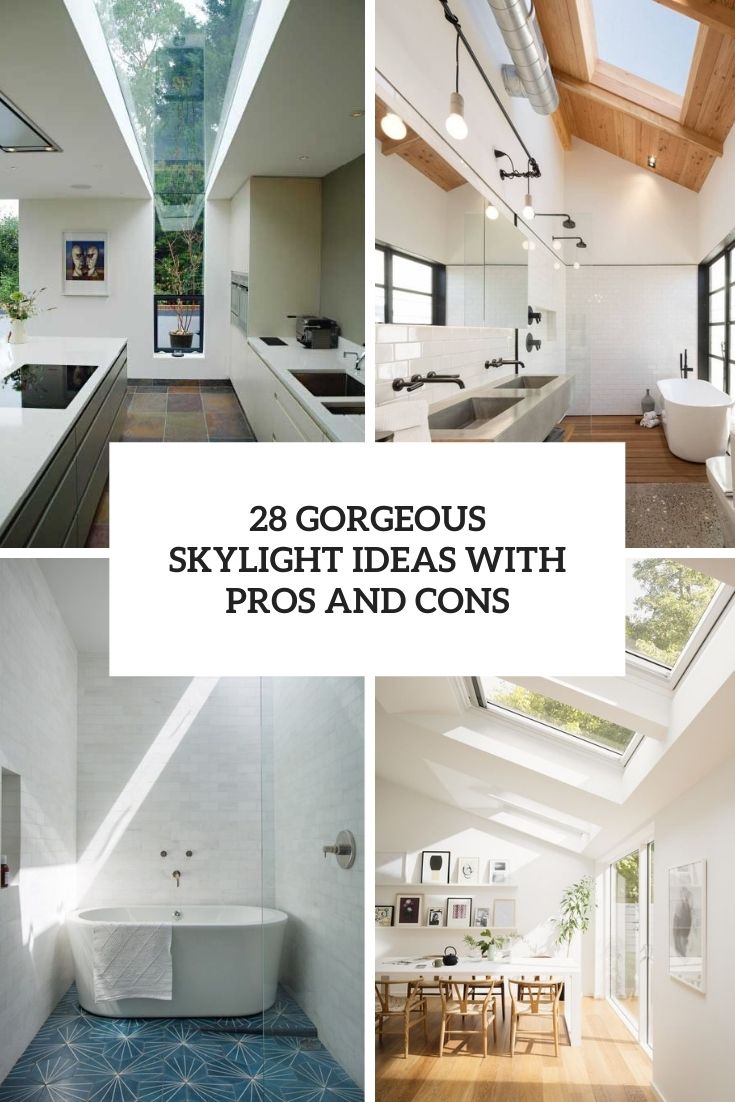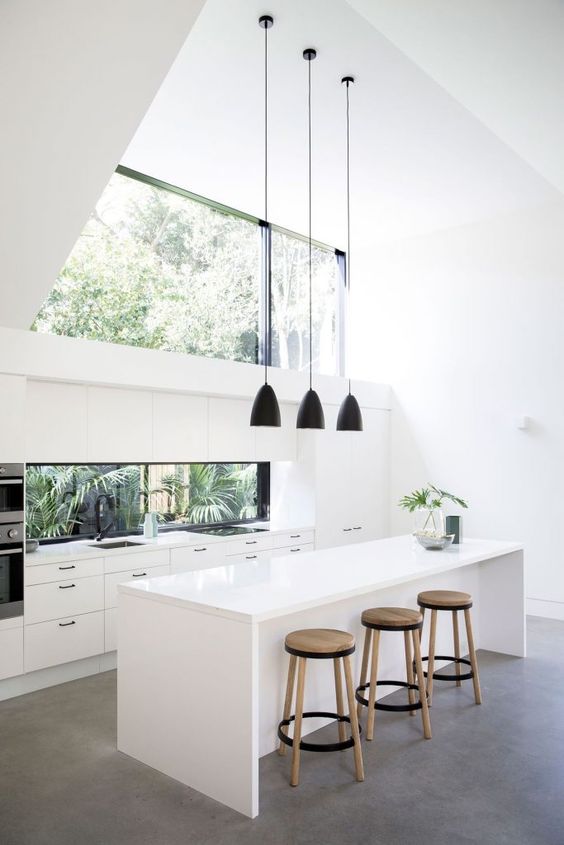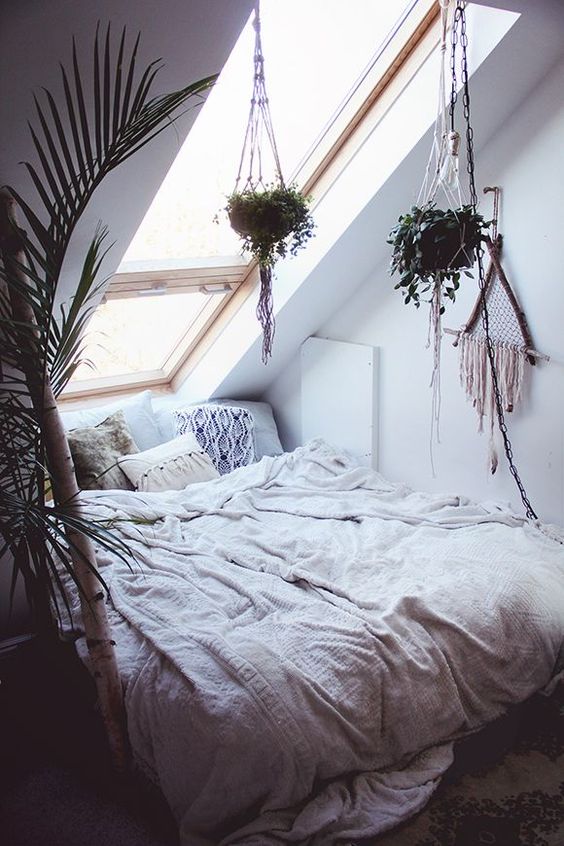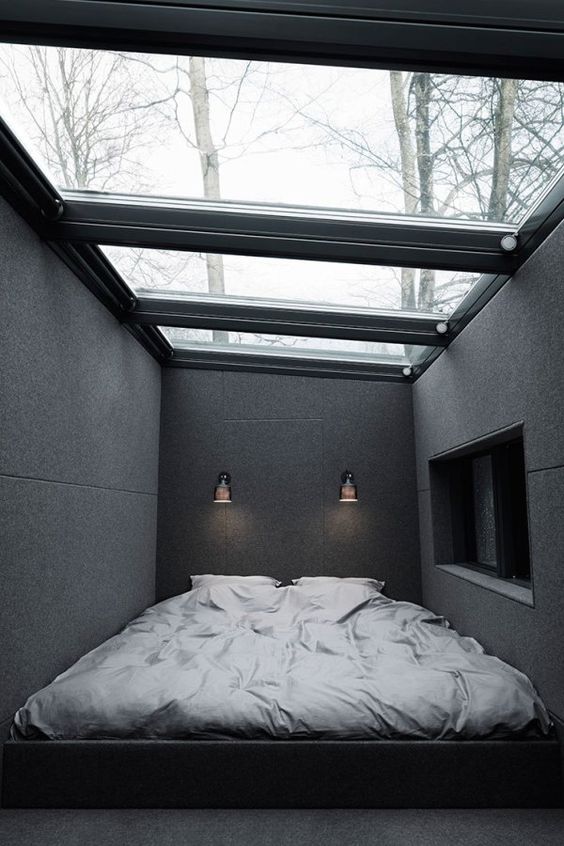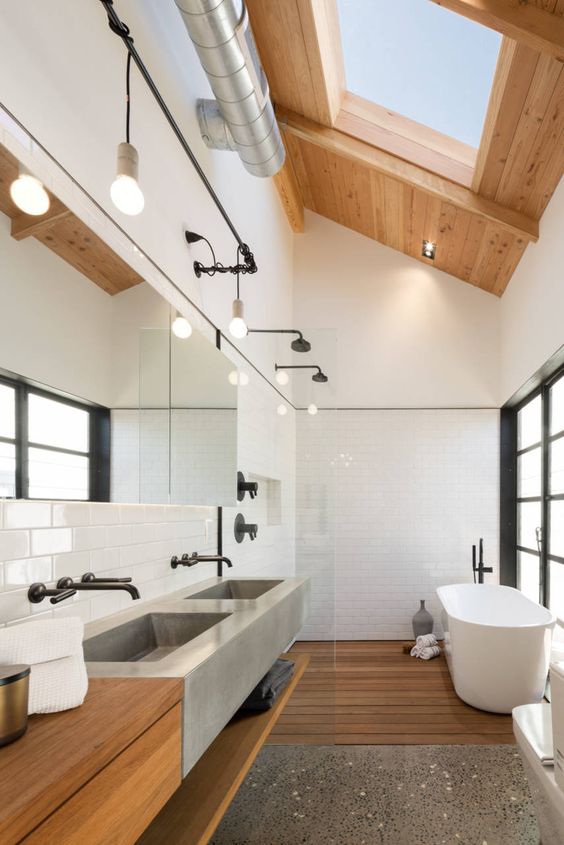Skylights are considered the best idea to bring a lot of natural light inside, and usually they are considered beneficial but they still have both advantages and disadvantages, let’s take a look at them before you take a decision.
Pros
One of the most positive aspects of having a skylight is that it brings extra daylight into a room, particularly during the winter months when days are shorter, there are fewer hours of sunlight, and the sun is at a lower angle than during the summer.
Because of this increase in natural light from skylights, the use of artificial lighting and electricity can be reduced, and during the colder months, skylights can contribute to the heat gain of a space and reduce the need for heating. Aside from the positive environmental impact that comes with using less electricity, the use of skylights has the potential to even reduce electric bills.
Another pro of skylights is their flexibility and range of design options, which can vary in location, size, shape, and angle so that they take advantage of local conditions. A skylight can be designed to capture early morning sunlight to help heat a space, but also so that it misses the strong afternoon sun that might make a room too warm. Some skylights come with shades or coatings to prevent overheating.
Finally, skylights have the potential to either dramatically enhance a design or act as the main design feature in a space. They can also have the bonus effect of creating dramatic lighting and a sense of upward ascension that can still inspire designers today.

A chic contemporary space with a sleek white kitchen and a dining space lit up with a large window that flows into a large skylight.
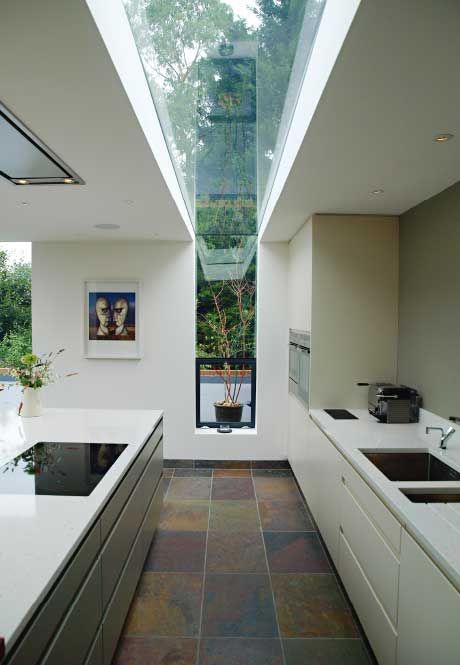
A contemporary and sleek kitchen with a narrow window that goes into a skylight, and they fill the space with natural light.
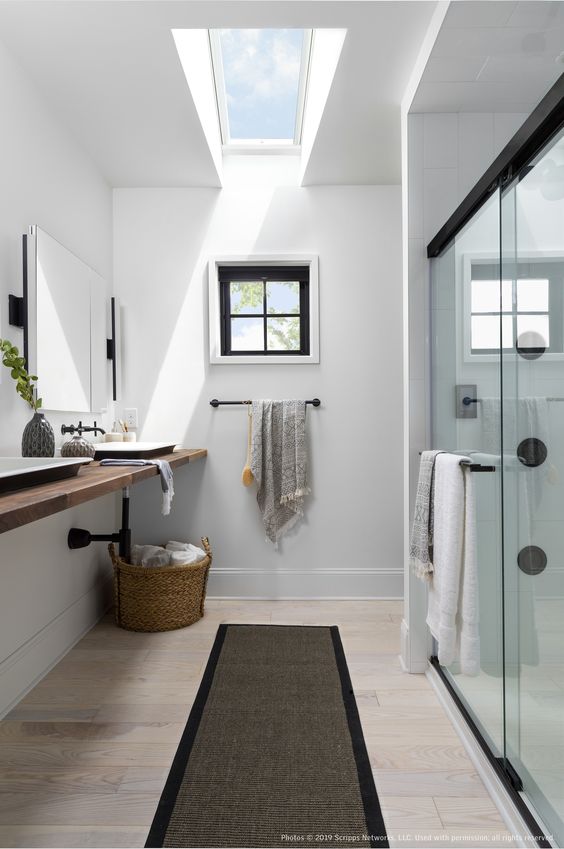
A contemporary black and white bathroom accented with a small French window and a large skylight is a fab space.
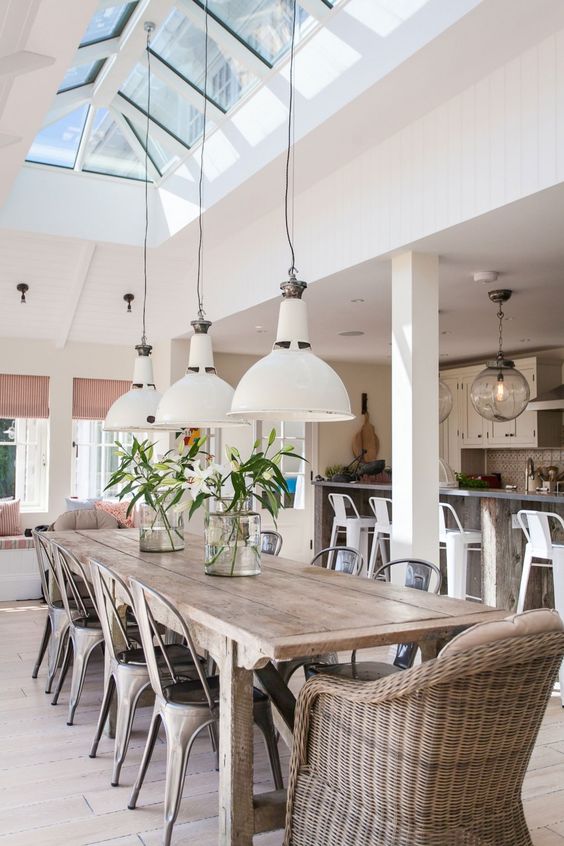
A cozy dining space with a rustic wooden table, a rattan chair and metal chairs with skylights above.
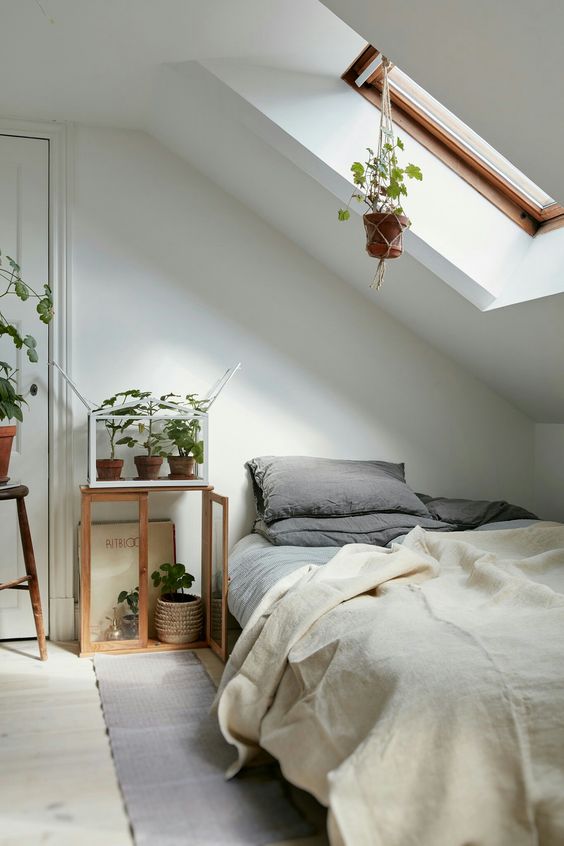
A cozy natural attic bedroom with a skylight lets enjoying sunlight in the morning and lots of potted plants that enjoy this light.
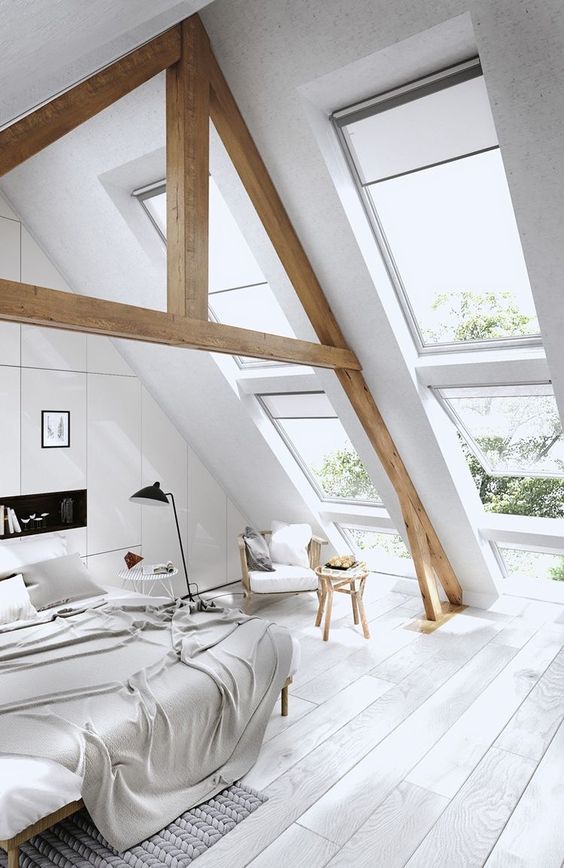
A large Scandinavian bedroom with large window skylights that highlight the double height ceiling is a gorgeous space.
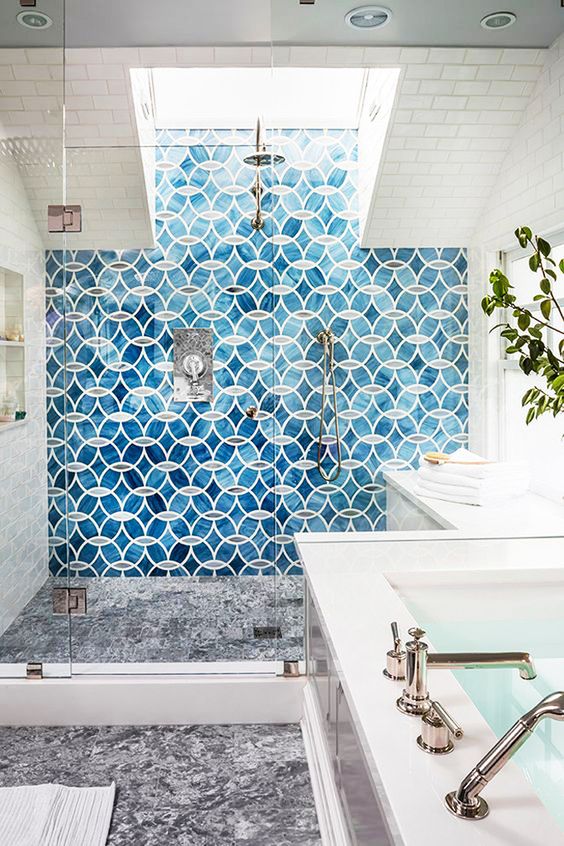
A modern and elegant bathroom with blue tiles in the shower and a skylight brightens up the shower space and makes it more inviting.

A modern blue kitchen and dining space are lit not only with windows but also with the help of skylights.

A modern dining space with a white table and wooden chairs, skylights and a glazed wall to maximize the views.
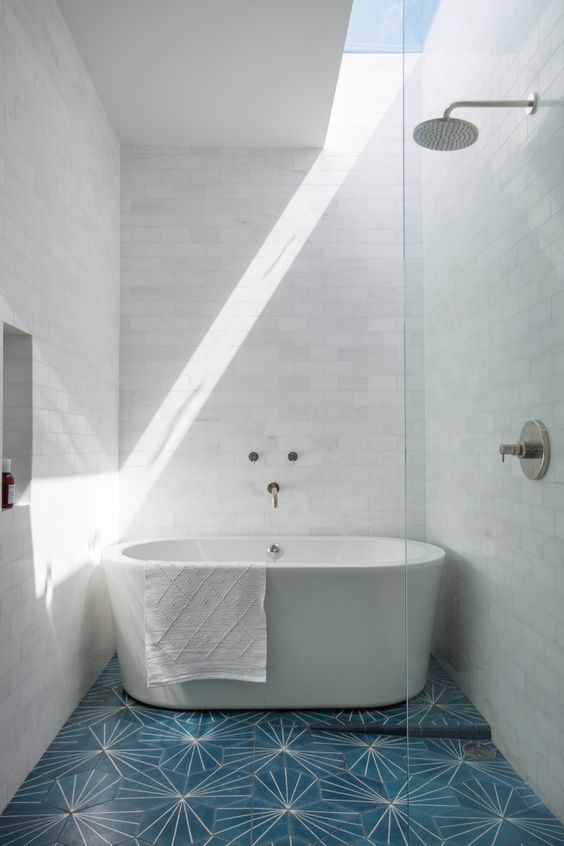
A piece of the blue sky is all we need for a great bathing experience, and a bit of sunshine is cool, too.
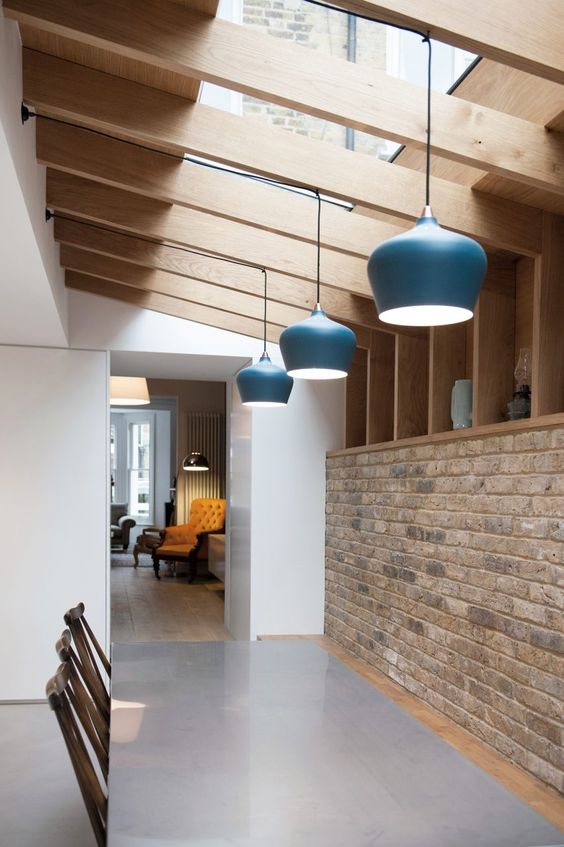
A simple and laconic dining space with a brick wall and open storage shelves, wooden beams and pendant lamps, a dining set lit up with skylights.
Cons
Though this abundance of rays can be a lifesaver in some spaces, it can also lead to potential problems related to bringing too much light and heat into your space. Make sure you keep this in mind when it comes time to decide on placement, size, direction, climate control, and how you’ll be using the space.
Another issue with skylights is that they often lose heat during cool months. As a general rule, glass conducts heat better than other building materials like insulation or concrete, allowing heat from inside a home to escape to the outside. To combat this, homeowners should choose skylights that are thermally-broken (meaning that no piece of hardware or trim directly connects the outside to the inside), and that the glass is insulated.
Even if a skylight is insulated, there are frequently problems with sealing the shaft properly and making sure that it’s properly installed. All too often, a skylight isn’t correctly installed, leading to moisture problems and leaks that can not only drip into spaces below, but also spread leaks to other parts of the roof that were previously dry.
Finally, skylights can be tricky to clean. If you’re in the habit of spring cleaning and like to embark on the annual ritual of washing all your windows, you’ll probably find cleaning your skylights to be difficult, if not downright unsafe. To reduce the number of regular cleanings, you’ll want to make sure that they’re installed in areas where they aren’t likely to have leaves or branches falling on them, which would require frequent clearing or cleaning.
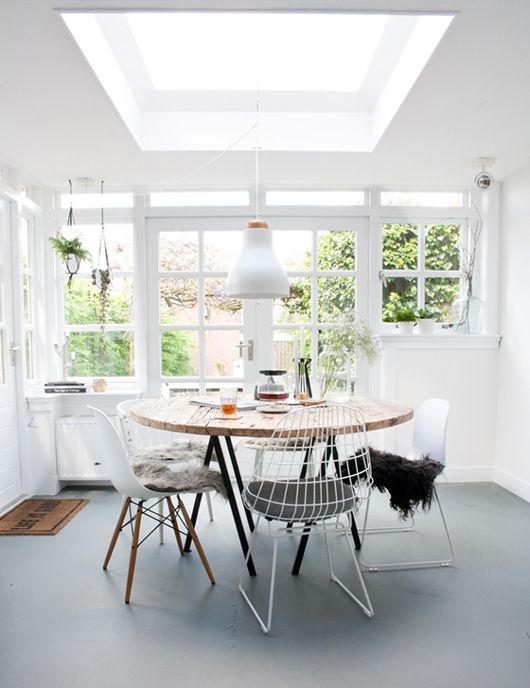
A simple square skylight gives much light to this dining room together with the glazed wall and they make the space amazing.
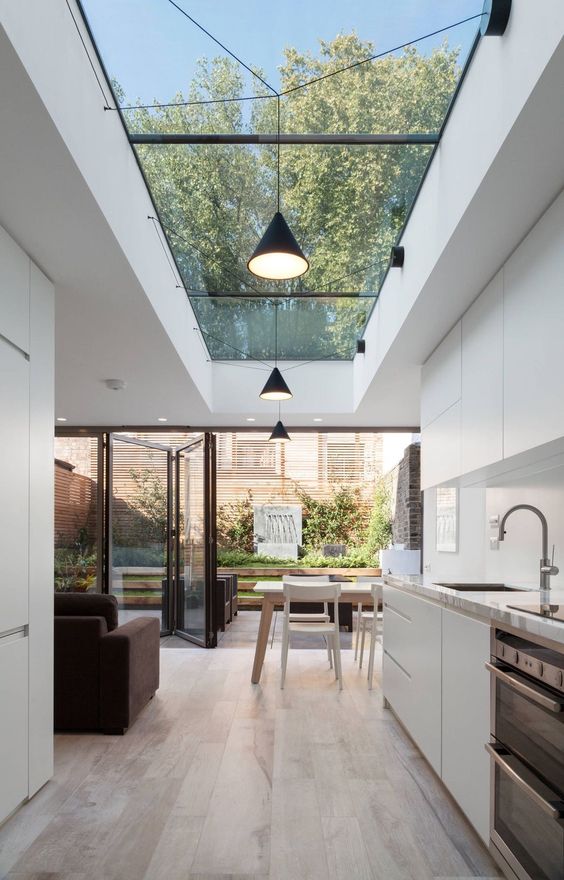
A slee minimalist kitchen in white with a glazed folding wall and a large skylight that lights up the kitchen.
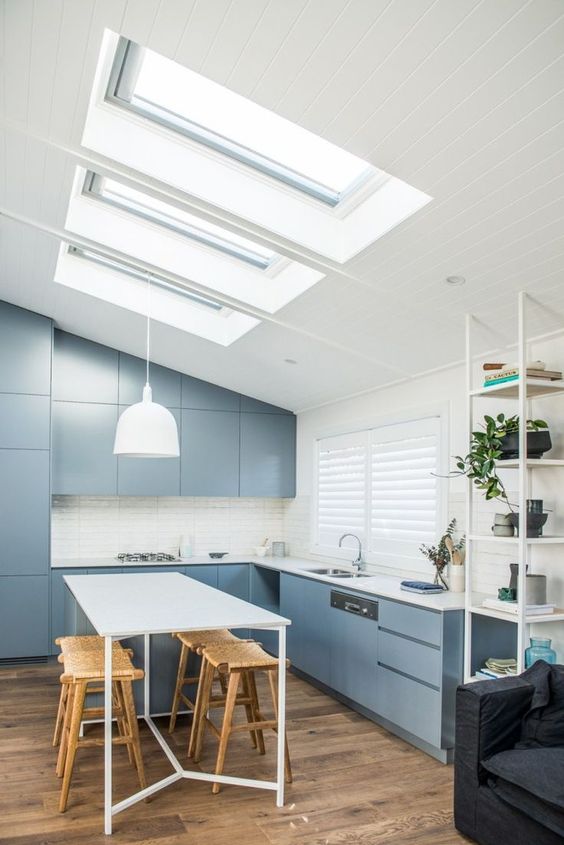
A sleek and plain blue ktichen with white countertops and a white backsplash, a series of skylights that illuminates the space.
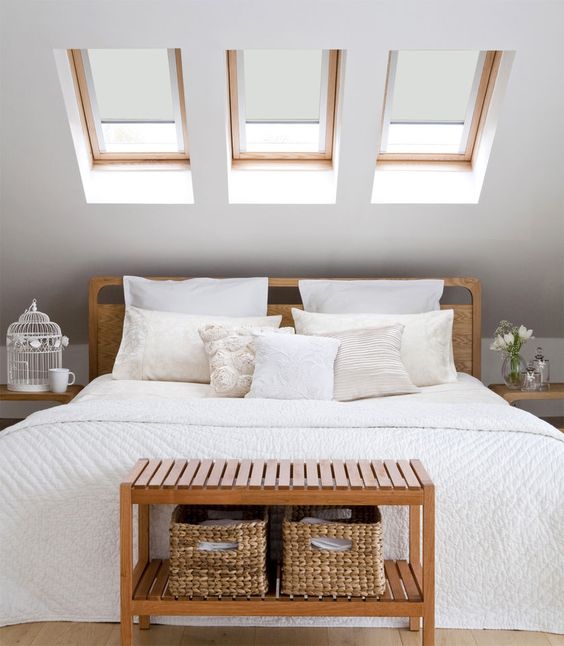
A small attic space with three skylights instead of a headboard is a nice idea to get natural light and visually enlarge the space.
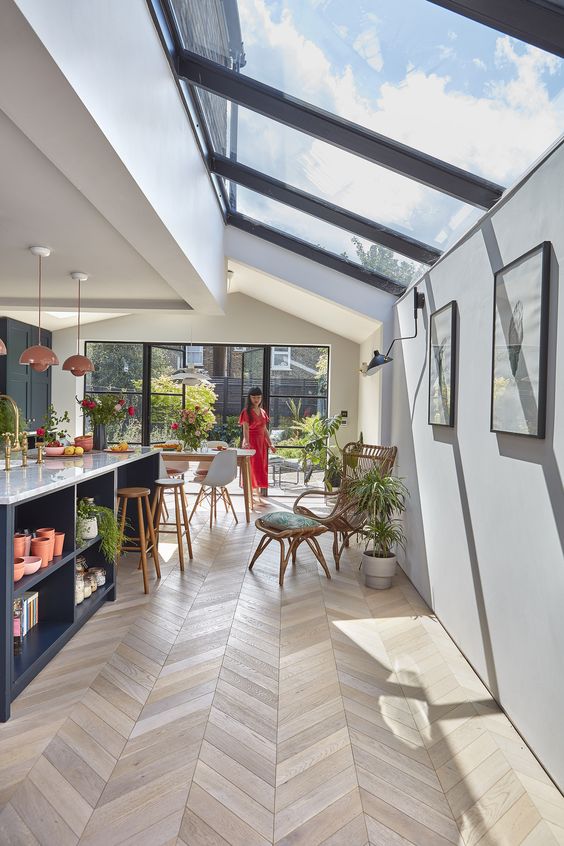
A stylish and chic space with a kitchen and a dining room, with a glazed wall and a series of skylights that cozy up the space.
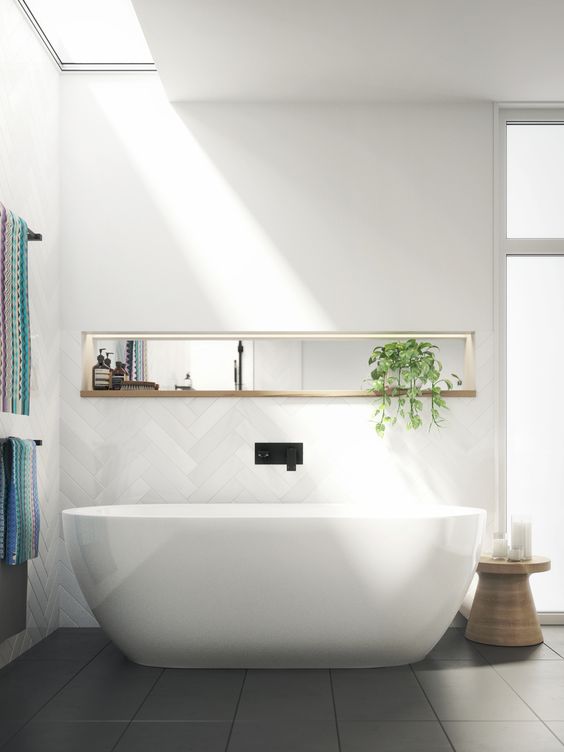
A white bathing space done with a skylight over it - a lovely idea to get natural light while keeping privacy.
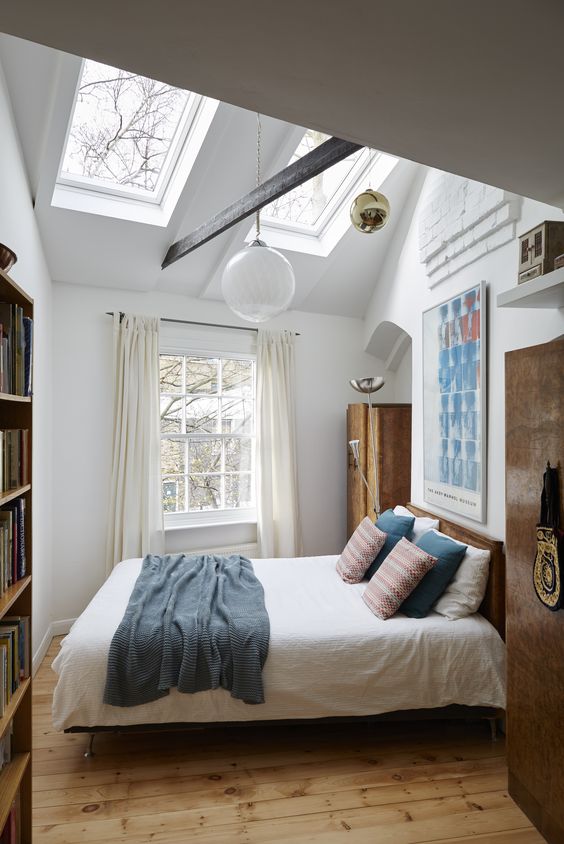
Additional skylights add more natural light to this small bedroom and make it look bigger, and pendant lamps highlight the tall ceiling.
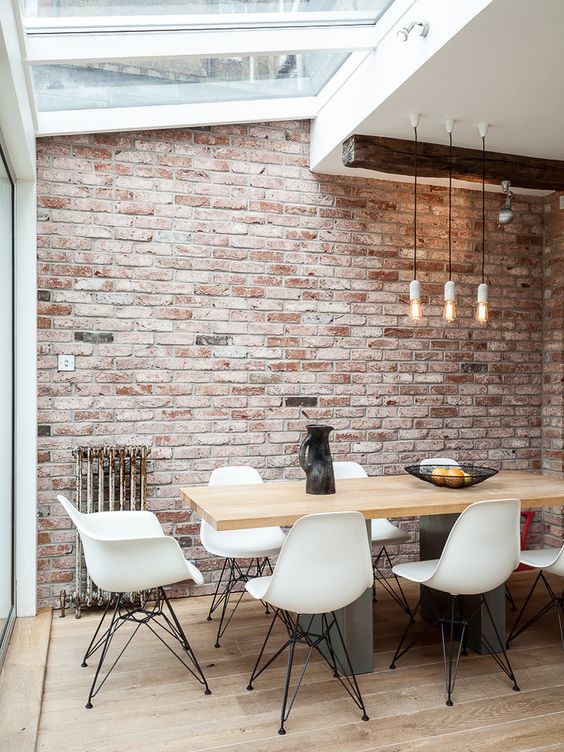
An industrial dining space with skylights is filled with daylight and pendant lamps highlight the high ceiling.

If you need privacy but want some natural light, go not for windows but for skylights in the bathroom.
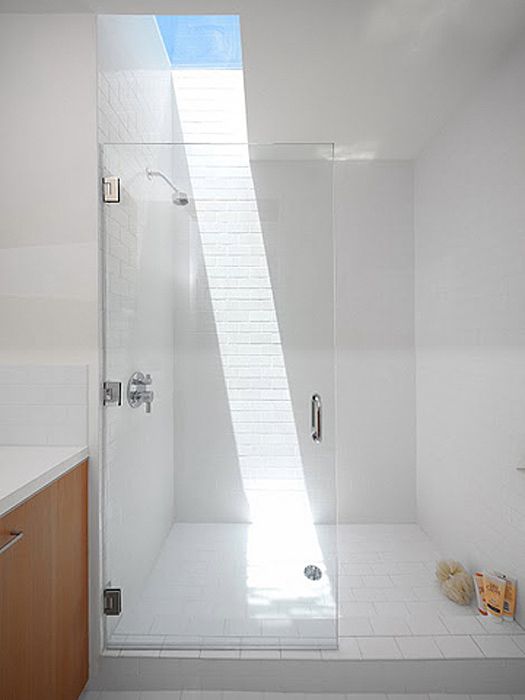
Just a small skylight makes this white shower space bolder and chic and lets you enjoy sunlight as if you are having a shower outdoors.
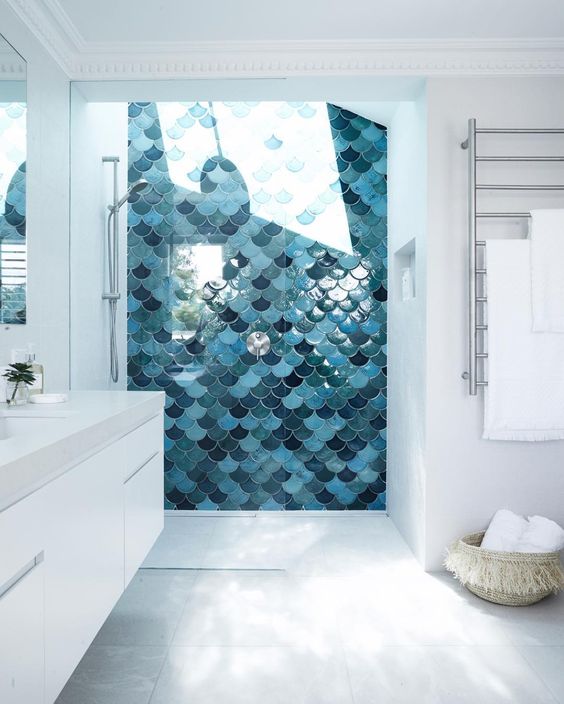
Make skylights over the shower to enjoy natural light while having a shower, you will feel as if taking a shower outdoors.
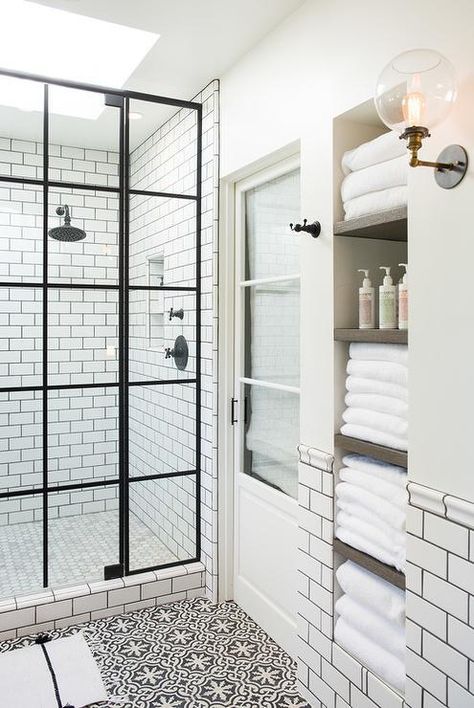
This white and black bathroom is made brighter with skylights over the shower and is filled with natural light easily.
